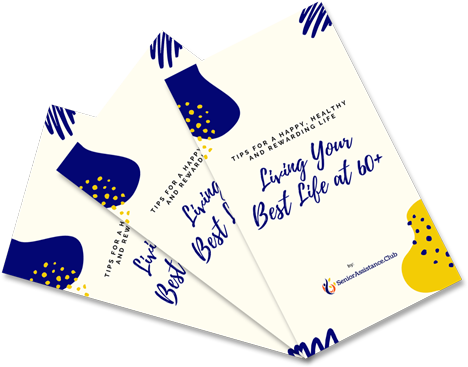10 Way Seniors Can Improve Their Balance

Feeling a little off balance as a senior? You're in good company. People over the age of 60 complain about unsteadiness and trouble balancing more than any other age group. But while balance problems can be alarming, uncomfortable and put you at an increased risk of falling, there is good news: most balance difficulties can be controlled with simple changes in diet and other lifestyle habits.
Of course, it's always important to check with a doctor to assess why you're feeling off-kilter. But for some simple ways to improve balance in older adults, these ten ideas can make you steadier and sturdier on your feet.
Practice Balancing
Good balance requires practice, and you can do that by working on skills that help you maintain and master equilibrium. Start with simple movements, like standing on one leg, performing squats, or walking heel to toe. Once you perfect these skills, move on to more challenging balance activities. You might try ballet dancing, cycling, or tai chi. Practicing balance will improve more than steadiness; you'll build strength, flexibility, and endurance too.
Remember to Drink
Drinking water has many proven benefits for seniors, including better balance. Sipping water throughout the day helps clear the mind and prevent dizziness and dehydration by supplying the brain with fluid. Unfortunately, many seniors don't consume enough water due to forgetfulness or fear of incontinence. Find a way to remind yourself to drink often, and don't let your pride get in the way. Staying hydrated is essential for avoiding falls and other debilitating health problems.

Invest in New Shoes
Love wearing cozy slippers or loose-fitting sandals? Aging feet may make these footwear options more comfortable, but they could be contributing to balance problems and potential falls. Well-fitted, supportive shoes, on the other hand, make all the difference when it comes to a steady gait and your ability to balance. Look for slip-resistant shoes with a low heel and a thin, hard sole for optimal balance, and wear them inside and out. Bare feet or just socks are fall hazards.
Increase Balance-Promoting Vitamin D
Known for promoting bone and cardiovascular health, vitamin D also improves balance in older adults. Studies have shown that people with vitamin D deficiencies can be at increased risk for falls and walking difficulties. Seniors should aim for 800 to 1,000 milligrams of vitamin D daily. The best sources? Besides sunlight, foods high in vitamin D, like fatty fish, egg yolks, beef liver, and fortified milk. Vitamin D supplements may be necessary to get an adequate dosage.
Check Your Prescription
Many prescription drugs are known to cause side effects that impair balance. Check your prescriptions to see if any of them contain warnings about lightheadedness or trouble balancing. If you find that a prescription causes too much discomfort, ask your doctor about making a change or adjusting the dosage. Reactions to prescription drugs vary among patients. Make the effort to find medications that do the job without harming your sense of balance.
Get Enough Sleep
Insomnia is a common complaint of seniors and one that can lead to numerous health problems, including headaches and unsteadiness. If you have trouble falling or staying asleep at night, adopting good sleep hygiene can help. Avoid alcohol several hours before bed, get plenty of physical activity during the day, and keep the bedroom cool, dark, and quiet. Short daytime naps may provide the extra rest you need to improve balance. For chronic insomnia, see a sleep therapist.
Steady Yourself with Better Posture
Too much sitting or standing in a slumped position isn't good for balance. Learn better posture by training your body to sit and stand tall and straight, which will help keep your head, neck, and shoulders aligned. And don't get in the habit of sitting for long periods of time. Make a point to get up from your chair throughout the day to stretch, bend, and move. Certain types of exercise, like yoga and Pilates, can also improve posture and correct balance problems.

Build Core Strength
The body's core muscles, found in the abdomen, hips, pelvis, and back, promote stability of the upper and lower body, allowing you to move your arms and legs easily and maintain balance when standing. Building core strength goes a long way to improve steadiness without requiring strenuous exercise. Try simple repetitions of leg lifts, wall push-ups, pelvic tilts, or partial sit-ups. Or, walk in water, since it's a low-impact activity that boosts the core muscles and balance.
Breathe Properly
Do you pay attention to how you inhale and exhale? It turns out that breathing can negatively impact balance, especially if you take short, shallow breaths, which can make you lightheaded and unsteady. Instead, work on deep diaphragmatic breathing through your nose, concentrating on a slow inhale and exhale. You might consult a mindfulness instructor or other health expert to help you learn to breathe properly. Then practice healthful breathing for improved balance.
Visit an Ear Specialist
Vertigo, which is the sensation of spinning that makes you feel off balance, headachy, and even nauseous, can be downright frightening, but the cause is often a benign condition of the inner ear. If vertigo affects you, ask your doctor about visiting an audiologist or ear, nose, and throat specialist, who will examine your ears and look for abnormalities. Many inner ear problems resolve on their own, but an ear specialist can offer treatment to ease symptoms and return balance to normal.
Assistance Club Summary
Don't take balance problems in the senior years lightly. Use these ideas to help you grow steadier on your feet so you can stay healthy, active, and injury-free doing what you love as a senior adult.
